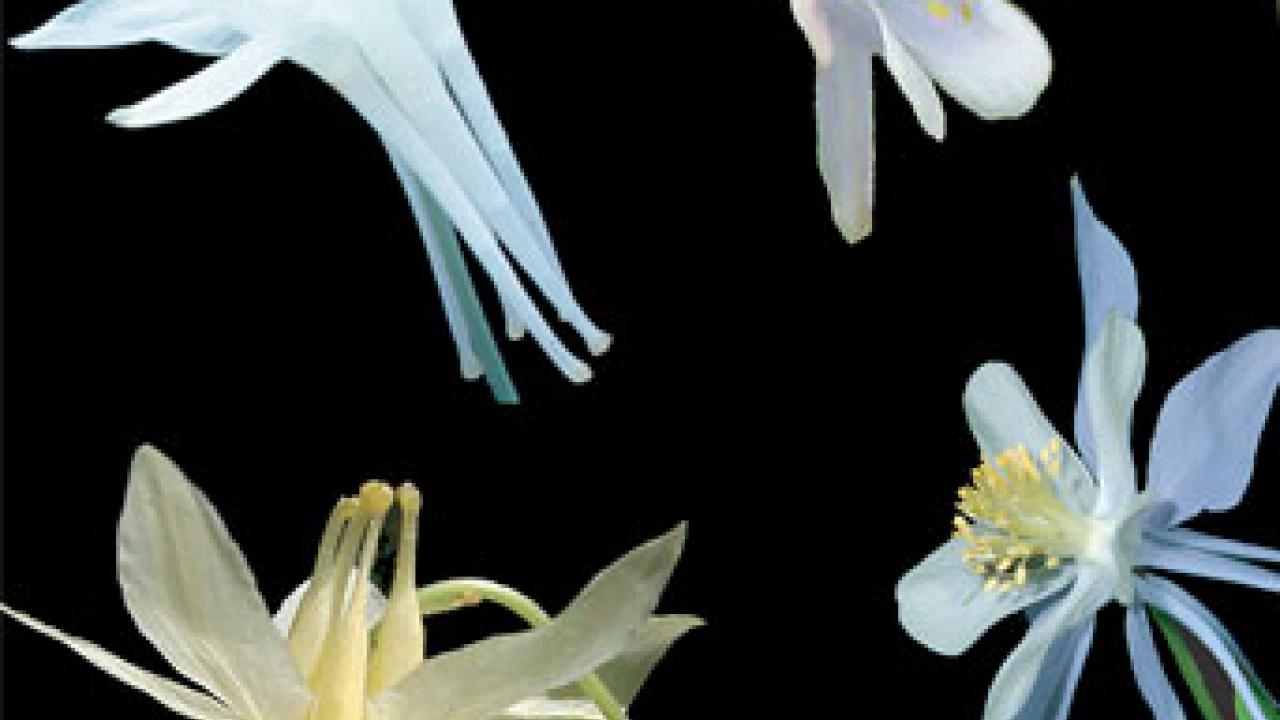Flowers evolve in a predictable fashion to match the mouthparts of pollinating birds and insects, rather than engaging in a gradual "arms race" between flower and pollinator, according to a new study by researchers at UC Davis and UC Santa Barbara. The research builds on work done by Charles Darwin more than 140 years ago.
Columbine flowers, found all over the Northern Hemisphere but with exceptional diversity in Western North America, keep their nectar at the bottom of a spur that ranges from fractions of an inch to several inches long, depending on species. Bees, birds or hawkmoths that visit to drink the nectar get dusted with pollen.
Justen Whittall, a postdoctoral research fellow at UC Davis, and Scott Hodges, professor at UC Santa Barbara, built a genetic family tree of the North American columbines. They found that they have repeatedly evolved into three groups with short, medium or long nectar spurs that matched the increasingly long tongues of bees, hummingbirds and hawkmoths, respectively. Longer flowers evolved from shorter flowers, without reversing.
"There's strong selection on the plant to draw pollinators into the flower," Whittall said.
Almost three-quarters of the variation in the flowers occurred when new species formed, most likely to take advantage of a new pollinator. The remaining variation could have occurred by a more gradual mechanism like that proposed by Darwin.
In 1862, Darwin predicted that a jungle orchid with a long, deep flower would be pollinated by a moth with an equally long tongue. Such an insect was discovered in 1903, but was not actually observed pollinating the orchid until 1997.
Both Darwin and Alfred Russell Wallace, the other pioneer of evolutionary theory, proposed that flowers and pollinators engage in an evolutionary race. If the flower spur becomes slightly deeper, pollinators will tend to evolve to have longer tongues, and then the flowers become slightly deeper again, and so on in a series of small, reciprocal steps.
The new study shows a more one-sided process that leads to exceptionally deep flowers in the columbines, Whittall said.
"It's a great example of evolution at work, happening right in my backyard," Whittall said. The paper is published in the June 7 issue of the journal Nature.
Media Resources
Andy Fell, Research news (emphasis: biological and physical sciences, and engineering), 530-752-4533, ahfell@ucdavis.edu
Justen Whittall, Evolution and Ecology, (530) 574-3341, jbwhittall@ucdavis.edu
